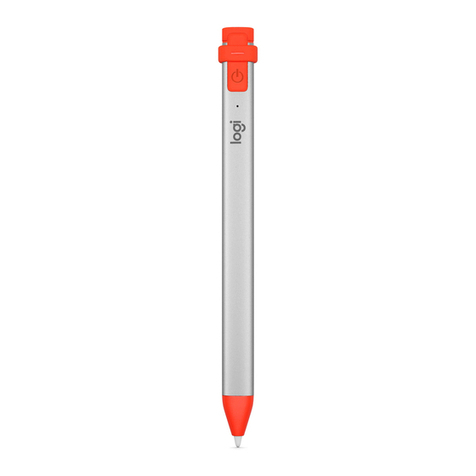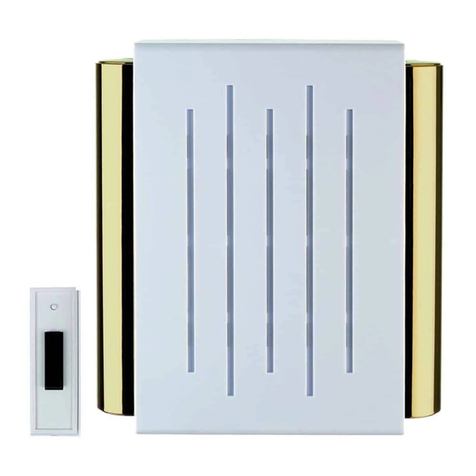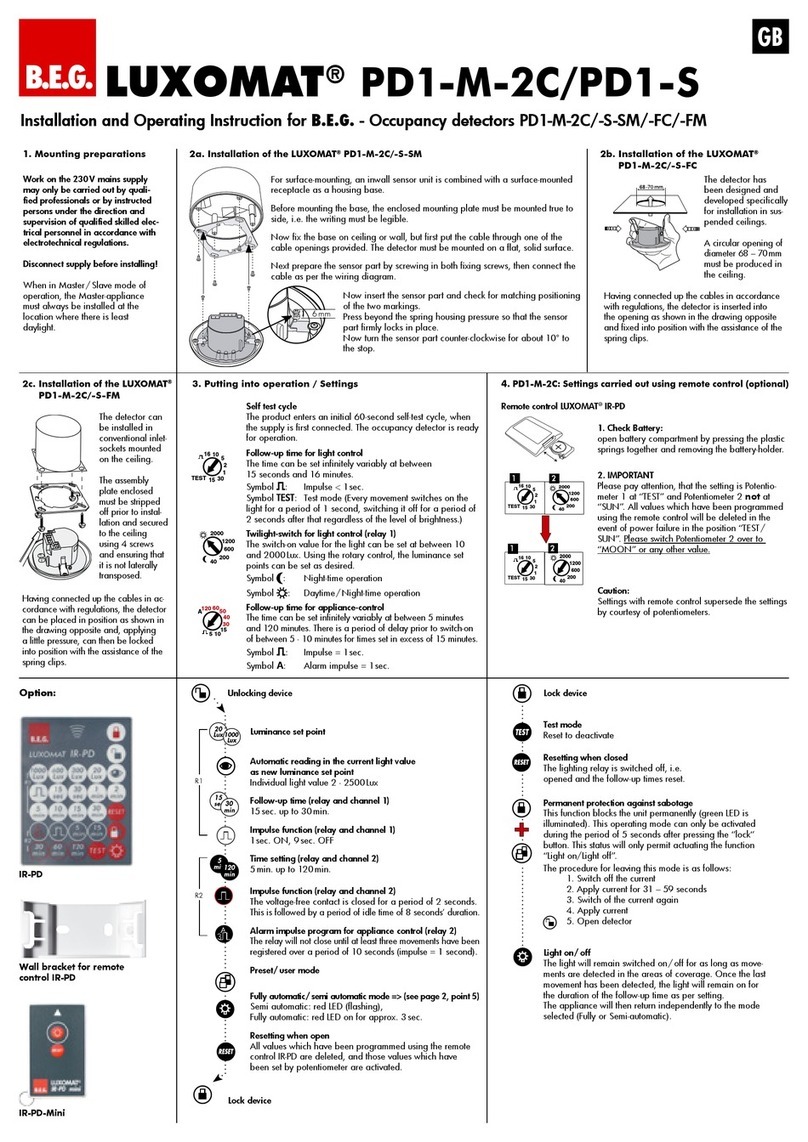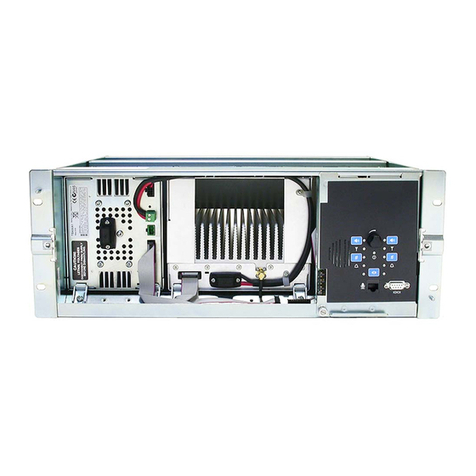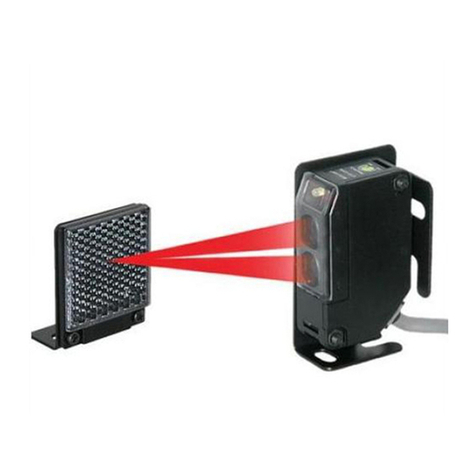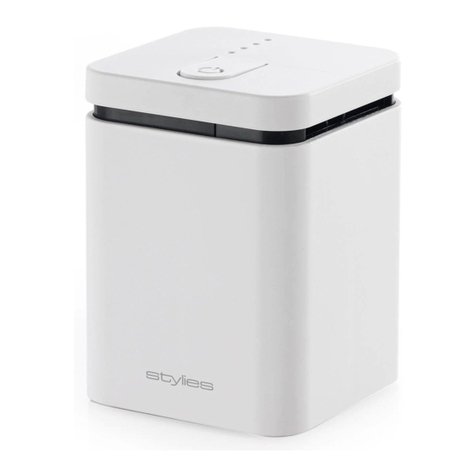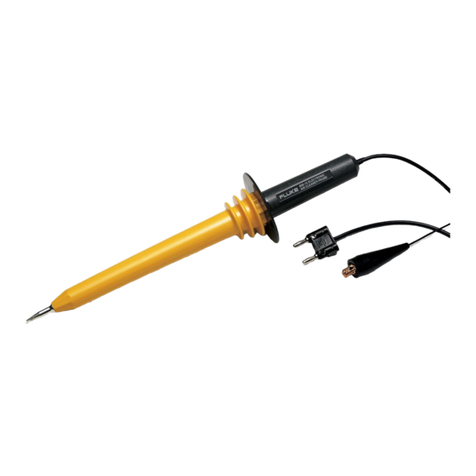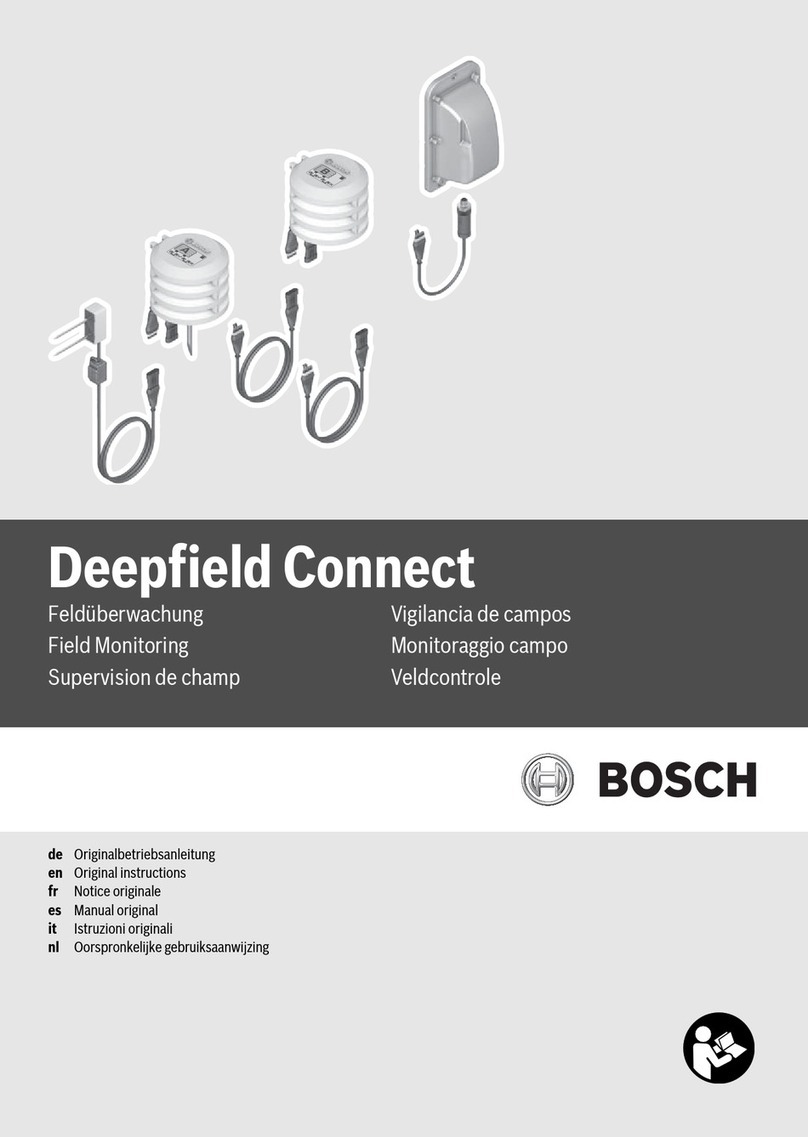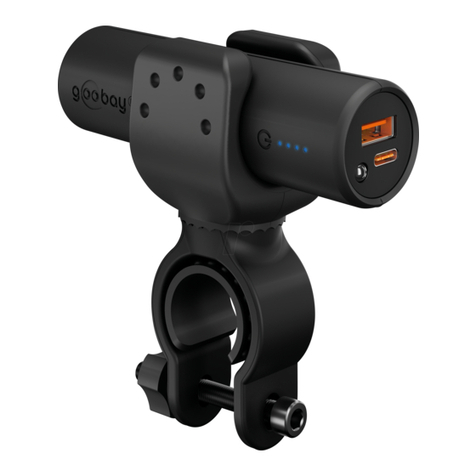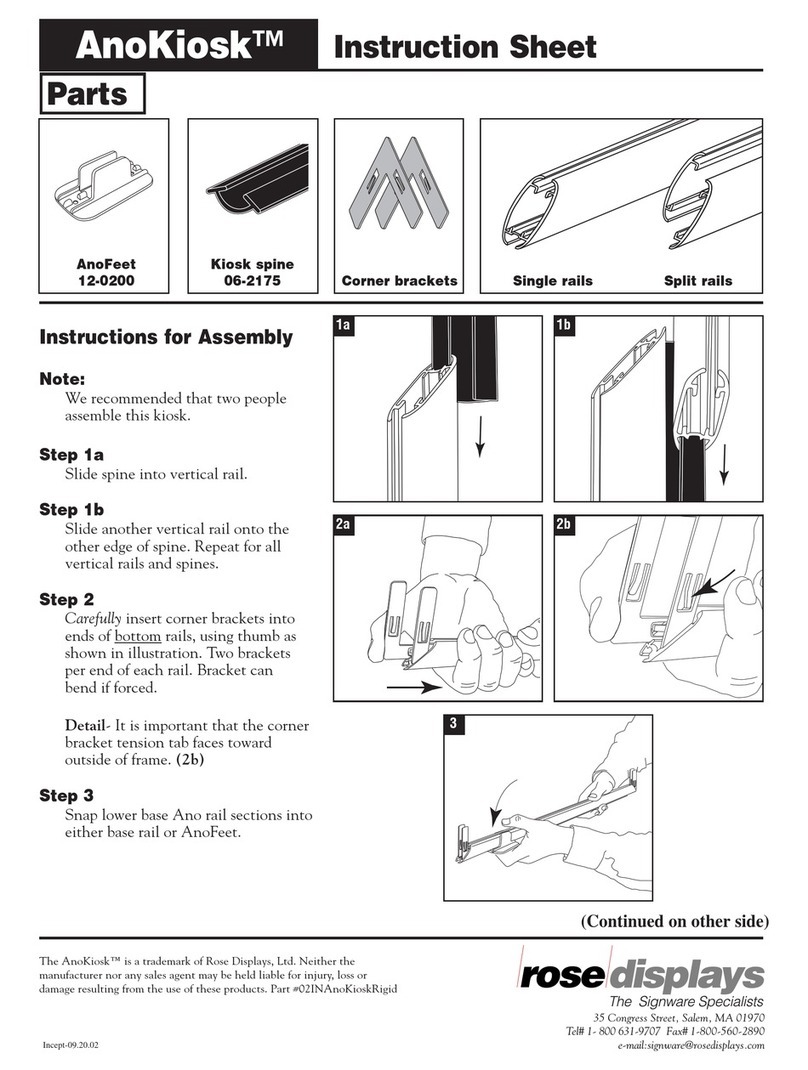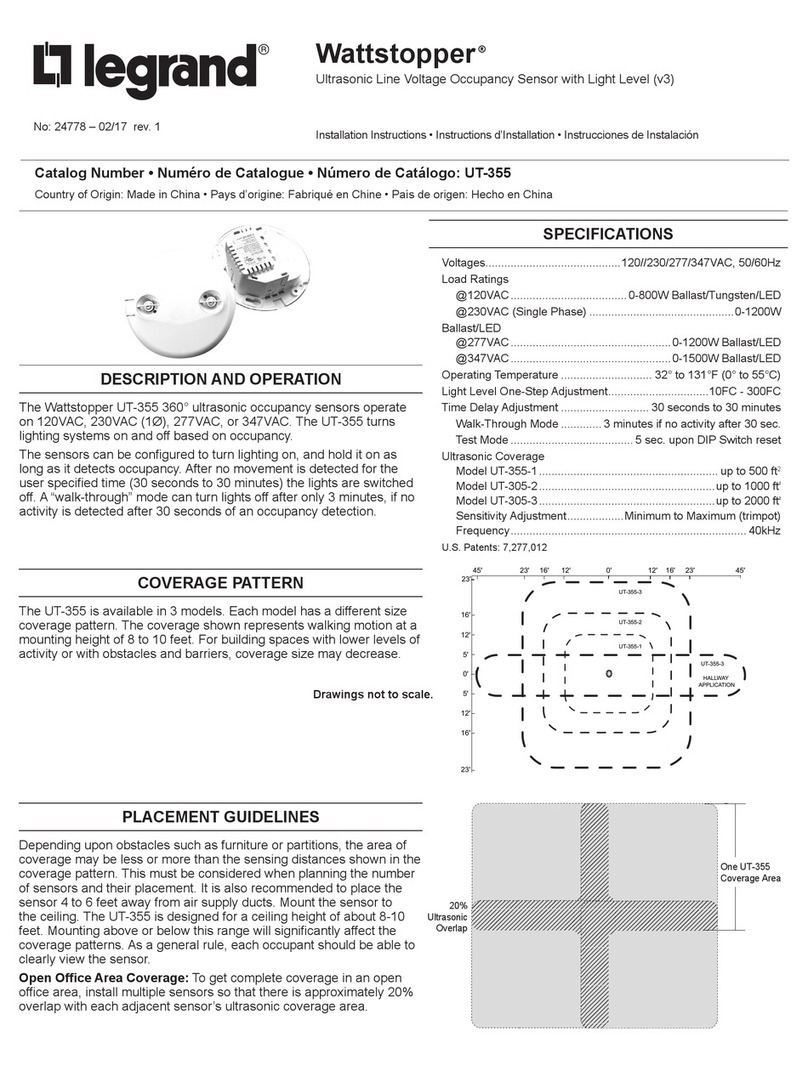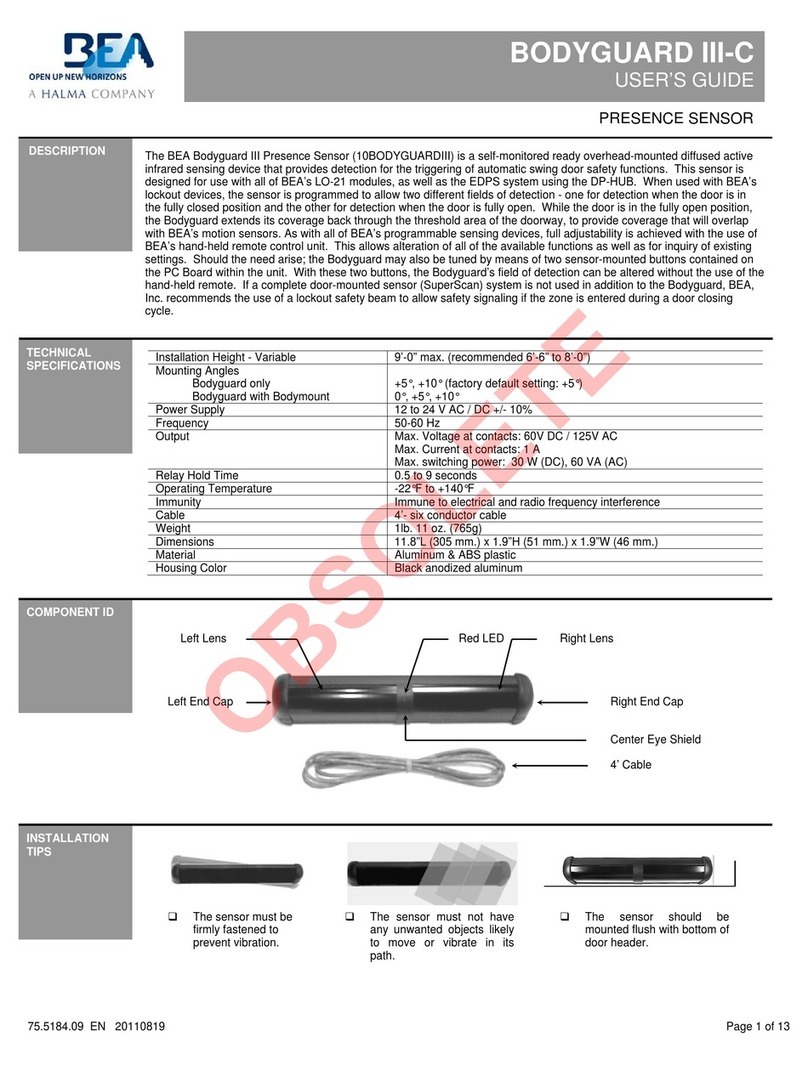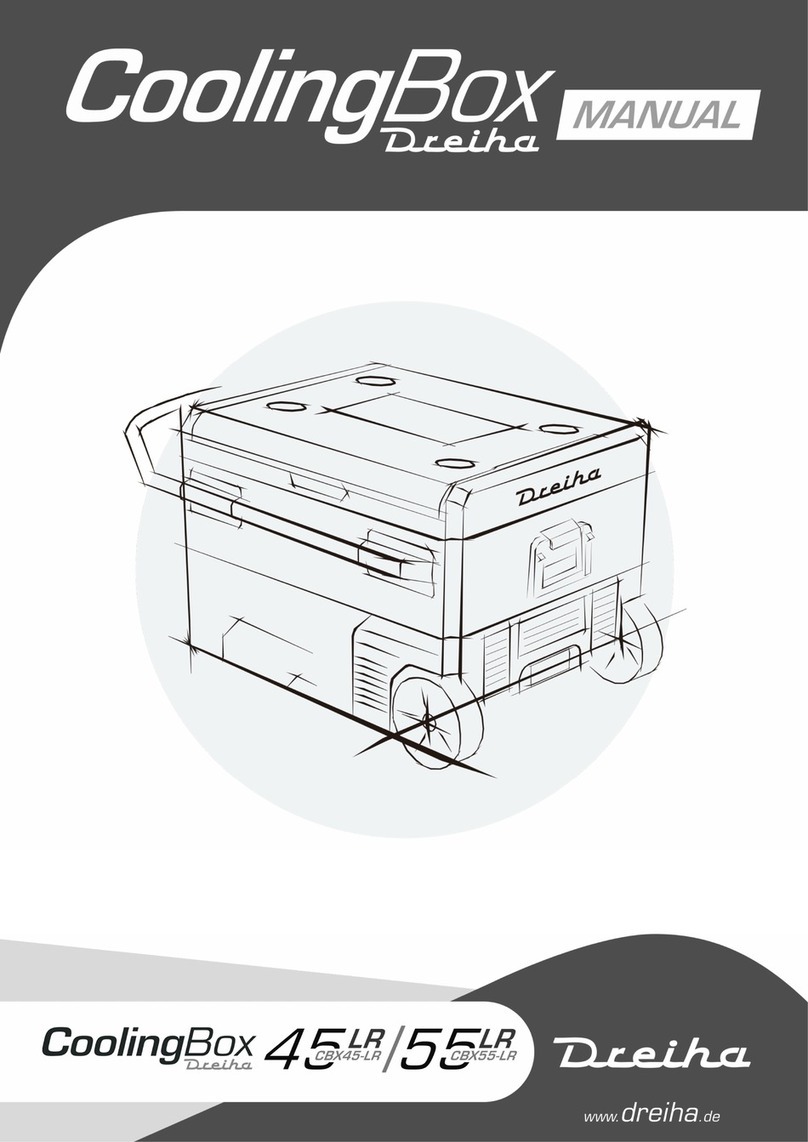Environmental Instruments AQMesh User manual

OMAQM4.0
2
Contents
Manual guidelines ........................................................................................................... 3
1.1 Hyperlinks..........................................................................................................................3
1.2 Notes.................................................................................................................................3
1.3 Safety-related information .................................................................................................3
1.4 Introduction.......................................................................................................................3
1.5 The AQMesh system...........................................................................................................4
General ........................................................................................................................... 5
2.1 Safety instructions..............................................................................................................5
2.2 Range of environmental conditions.....................................................................................6
2.3 Safety symbols used ...........................................................................................................6
2.4 Power options....................................................................................................................7
2.5 Storage ..............................................................................................................................8
2.6 Shipping pods.....................................................................................................................8
2.7 Moving pods ......................................................................................................................9
2.8 Memory.............................................................................................................................9
2.9 Calibration .........................................................................................................................9
2.10 Cross-gas effects and data processing..............................................................................10
2.11 Service ...........................................................................................................................10
2.12 Cleaning .........................................................................................................................10
Installation.....................................................................................................................11
3.1 Tools required..................................................................................................................11
3.2 Preparation......................................................................................................................11
3.3 Installation method..........................................................................................................12
3.4 Cable conductor sizes and cable insulation requirements ..................................................15
3.5 How to wire the external DC supply..................................................................................16
3.6 Deployment tips to minimise electromagnetic compatibility .............................................18
3.7 How to connect the external high capacity battery pack....................................................19
3.8 How to connect the solar panel assembly .........................................................................19
3.9 NiMH rechargeable battery / charging ..............................................................................19
3.10 Changing the battery ......................................................................................................20
3.11 Activation method..........................................................................................................21
3.12 LED codes during the start-up sequence..........................................................................24
3.13 Changing a sensor...........................................................................................................25
3.14 Getting online ................................................................................................................27
Important notices to all customers..................................................................................28
4.1 AQMesh pod technical specification .................................................................................28
4.2 Solar power unit technical specification ............................................................................30
4.3 Warranty policy................................................................................................................30
4.4 WEEE compliance.............................................................................................................33
4.5 Battery disposal considerations ........................................................................................33
4.6 Declaration of Conformity ................................................................................................35

Manual guidelines
1.1 Hyperlinks
Hyperlinks to other sections of this manual, websites or email addresses are in
the following format:
www.aqmesh.com
1.2 Notes
Important/useful information and instructions are shown clearly throughout the
manual in the note format below:
Note: For further information please contact AQMesh technical support
1.3 Safety-related information
Information in this manual that may affect the safety of users and others is
preceded by the following symbol:
Warning
Failure to follow this information may result in physical injury, which in some
cases could be fatal.
1.4 Introduction
This manual explains how to install and operate the AQMesh air quality monitor.
The AQMesh air quality monitor is designed to measure atmospheric gases and
particulates in ambient environments. It has been developed to incorporate the
latest design and technology, providing the user with an extremely simple-to-
use and flexible monitor that is intended for use in a number applications.
Note: Whilst robust in design the monitor is a sensitive piece of scientific
equipment and should be treated as such.

OMAQM4.0
4
1.5 The AQMesh system
AQMesh has the following features:
•Parts per billion measurements of gases
•Particle count and mass estimation
•Up to two years sensor and battery life, depending upon data frequency,
transmission rates and battery type chosen
•NO gas measurement in the range 0 to 4,000ppb
•NO2 gas measurement in the range 0 to 4,000ppb
•O3 gas measurement in the range 0 to 1,800ppb
•Optional CO gas measurement in the range 0 to 6,000ppb
•Optional SO2 gas measurement in the range 0 to 10,000ppb
•Optional particle count 0.3 to 30+ µm
•Pressure measurement range 500 to 1500 mb
•Pod temperature measurement range -20 to +100 ˚C
•Humidity measurement range 0 to 100 %RH
•Wireless GSM communications
•Automatic GPS location (Not Mk1 hardware)
•Secure mounting
•Rugged, waterproof IP65 case design
•Long-life lithium primary or rechargeable NiMH battery options.
•Other power options include 12V D/C, solar panel, external high capacity
battery pack or 110-240V A/C mains (using a suitable transformer)
•Simple installation
•Large or small networks –single pod or 100’s
•Data is automatically downloaded to secure server
•Easy access to data via web account or API
•Data tables and graphs
•Data export

OMAQM4.0
5
General
If practical, protect the analyser from strong direct sunlight as this will quickly
raise the temperature of the analyser beyond its operating range. The
manufacturer has provided a sun shield to help with the effects of direct sunlight
which should be oriented towards the prevailing sun throughout the hottest
part of the day.
2.1 Safety instructions
Warning
The AQMesh pods have a back-plate that covers any
accessible components which may cause electric shocks
or burns. This plate must only be removed when power to
the system has been removed.
Failure to isolate the supply could result in an electric
shock or burns.
It is the responsibility of the owner of this equipment to
complete a risk assessment on its installation, operation,
and maintenance prior to it being used.
Only suitably trained personnel should carry out the installation in accordance
with the relevant applicable codes of practice.
Repair and maintenance of this equipment should be carried out in accordance
with the relevant applicable codes of practice by trained personnel.
Only the manufacturers approved components are to be used as replacement
parts.
If the equipment is likely to be exposed to aggressive substances, e.g. acidic
liquids, gases that may attack metals or solvents that may affect polymeric
materials, then it is the responsibility of the user to take suitable precautions.
Warning
When opening the AQMesh pod great care must be taken
by the operator. It is the responsibility of the owner of the
equipment to ensure that all personnel are adequately
trained.

OMAQM4.0
6
The equipment should not be altered in any way other
than described within this operating manual. Alterations
or changes outside of this operating manual could make
the equipment unsafe.
It is vital that the instructions in this operating manual are
followed closely. Failure to comply could cause an injury
to the operator.
Note: While robust in design the monitor is a sensitive piece of scientific
equipment and should be treated as such.
2.2 Range of environmental conditions
AQMesh pods are tested for use in ambient temperatures in the range of -20°C
to +50°C. The AQMesh pods are designed for use outdoors and have an IP65
rating.
2.3 Safety symbols used
The following safety symbols may be used on the AQMesh pods:
Protective conductor terminal
Caution, risk of electric shock
Caution, refer to operation manual.
Class 2 laser, risk of blindness.
Warning
Where the symbol or is used on the product, the
operating manual must be consulted.
General product label symbols are listed as follows:

OMAQM4.0
7
CE conformity-The CE-
marking is the
manufacturer's statement
to the EU authorities that
the product complies with
all relevant CE-marking
Directives.
Separate collection,
handling and disposal
for waste electrical
and electronic
equipment and its
components.
VDE mark is a symbol for
electrical, mechanical,
thermal, toxic, radiological
and other hazards.
Refer to operators
manual.
Double insulated
construction - does not
require an Earth.
Equipment for indoor
use only.
2.4 Power options
AQMesh pods can be supplied with a number of different power options,
specified at time of manufacture.
Power options
Warning
Internal primary Lithium battery
pack.
(AQM-BATTERY).
Output : 3.6V 76Ah, 273.6Wh.
Contains Lithium Thionyl chloride
Batteries.
Do not use if damaged.
Fire, explosion hazard if used incorrectly.
Do not recharge, disassemble, heat
above 100degC, incinerate or expose
contents to water.
Please do not return if faulty.
Dispose of according to local regulations.
Internal rechargeable NiMH Battery
pack.
(AQM-RECHARGE)
Output : 3.6V 9Ah, 32.4Wh.
Contains NiMH Batteries.
Do not use if damaged.
Fire, explosion hazard if used incorrectly.
Please do not return if faulty.
Dispose of according to local regulations.
Recharge indoors in an open area on a
fire-resistant surface using the
manufacturer supplied charger (part no.)
only.

OMAQM4.0
8
External manufacturer battery pack
(Option only available at time of
manufacture)
Output : 3.6V 456Ah, 1641Wh
3.6V 200mA.
Contains Lithium Thionyl chloride
Batteries.
Do not use if damaged.
Fire, explosion hazard if used incorrectly.
Do not recharge, disassemble, heat
above 100degC, incinerate or expose
contents to water.
Please do not return if faulty.
Dispose of according to local regulations.
External DC power
(Option only available at time of
manufacture)
Input: 9-25V
130mA @9V
Danger risk of electric shock
No user serviceable parts.
Do not open.
AQMesh pods are supplied with 1.5M of
arctic grade 2-core electrical cable which
should be trimmed and terminated in a
suitable junction box.
Solar panel assembly
(Option only available at time of
manufacture)
Input: 12V
100mA @12V
Danger risk of electric shock and hot
surfaces
No user serviceable parts.
Do not open.
AQMesh pods are supplied with 1.5M of
arctic grade 2-core electrical cable with
military style connectors for connecting
the pod and solar panel. Extension leads
are available AQM-EXT.
2.5 Storage
When not in use the AQMesh pods should be kept in a clean, dry and ambient
temperature environment, such as an office. It should be stored upright on its
base, which helps prolong the life of the sensors.
2.6 Shipping pods
If fitted with an internal lithium battery pack, specified at time of manufacture,
AQMesh pods are considered class 9 dangerous goods. It is therefore not
possible to ship these AQMesh pods via a normal courier service, or travel with
them on any commercial flight, unless you remove the lithium battery pack first.

OMAQM4.0
9
Note: The transportation of dangerous goods is controlled and governed
by a variety of different regulatory regimes, operating at both the national
and international levels. Collectively, these regulatory regimes mandate the
means by which dangerous goods are to be handled, packaged, labelled and
transported.
If you are sending pods fitted with lithium batteries to a new location they must
be packaged accordingly for class 9 dangerous goods and sent via a dangerous
goods carrier with all relevant paperwork and notifications.
AQMesh pods which are not fitted with the lithium battery pack can be shipped
via any normal courier service.
2.7 Moving pods
When AQMesh pods have been relocated they must go through the rebasing
process in their new environment. This has to be manually initiated by logging
in to the AQMesh server and selecting the rebasing option.
The risk of sensor failure is worst when pods are moved around or shipped.
Please ensure that relative humidity levels and temperature is changed
gradually and the pods are handled gently, particularly when they have been
recently exposed to high relative humidity For example, when wanting to bring
pods indoors they should be left to sit in cool, dry conditions for 24 hours prior
to bringing them fully indoors.
2.8 Memory
Data is automatically transferred to the AQMesh server for secure storage and
processing. Data is only stored locally when it cannot be transmitted to the
server. The internal memory should not be used as a permanent storage
medium and any important data should be transferred to AQMeshData as soon
as possible. The monitor should not be stored for prolonged periods with
valuable data in its memory. The pod memory should be cleared after any power
cycle to avoid potential corruption of its memory leading to loss of data.
2.9 Calibration

OMAQM4.0
10
The gas sensors fitted into the AQMesh pods are fully calibrated during the
manufacturing process and they do not exhibit drift normally associated with
other types of gas sensor. However, to confirm accuracy prior to deployment
pods can be co-located with industry standard reference equipment and scaled
accordingly. Guidance on scaling can be found at www.aqmesh.com/support.
2.10 Cross-gas effects and data processing
The electrochemical sensors fitted into the AQMesh pod suffer cross-gas effects.
Measured gases (i.e. NO, NO2, O3) are compensated automatically during post-
processing on the AQMesh server. Any unmeasured gases could be the cause of
erroneous gas measurements.
Note: For further information please contact AQMesh technical support
2.11 Service
If handled and operated correctly your AQMesh pods will last for many years
but should go through regular maintenance to ensure correct operation and
accurate readings. The manufacturer recommends replacement of all sensors
and (if fitted) the internal lithium battery every 2 years. The optional particle
counter should be routinely serviced annually (more frequent service may be
required depending on local conditions.
2.12 Cleaning
The AQMesh housing and fixings can be wiped clean using a damp non-fibrous
cloth. Do not submerge in water. Do not attempt clean the sensor membranes.
Note: Do not use solvents or any other chemical cleaners as they may
damage the finish and adversely affect the gas readings.

OMAQM4.0
11
Installation
3.1 Tools required
•Basic tool kit
•Handle for hex security bit
Each installation is different depending on the site and method of mounting.
Therefore, the tooling requirements for placement and fixing of the mounting
bracket is not covered by this document.
3.2 Preparation
It is the manufacturer’s recommendation that the installation is always carried
out in accordance with this operation manual. Any electrical work should be
carried out by a competent electrician and the relevant codes of practice should
be followed at all time.
Warning
Power should NOT be applied to a pod before all fixings
and wiring have been completed and tested.
Only a qualified competent person should make electrical
connections.
In order to effectively install AQMesh pods it is important that the site is ready
and in a fit state. In particular, the following points should be noted:
•This operating manual has been read and fully understood
•A risk assessment has been performed that includes installation,
operation and maintenance of the system and the removal, where
practically possible, or any identified hazards
•Applicable codes of practice identified
•The AQMesh pod has been received on site, unpacked, contents checked
and packaging checked for obvious damage
•A suitable location is determined for the installation of the AQMesh pod
•If required a suitable isolated D/C power supply is installed

OMAQM4.0
12
Note: Failure to comply with any of the above may result in additional
time on site and additional costs.
Carefully unpack your AQMesh pod. You should have the following items:-
•AQMesh pod serial number XXXXXXX fitted with its sun shield
•An antenna
•A mounting bracket and two jubilee clips
•A security screw and security screwdriver bit
•2mm Hex key
Warning
DO NOTE POWER UP THE AQMESH POD WITHOUT THE
AERIAL IN PLACE AS IT CAN DAMAGE THE ELECTRONICS.
Install the antenna to the threaded fitting on the top of the AQMesh pod. Care
should be taken to ensure a good connection but don’t over-tighten.
3.3 Installation method
Warning
Always ensure that you refer to and comply with the
relevant National Working at Heights regulations prior
to any installation work.
Only a qualified competent person should make
electrical connections.

OMAQM4.0
13
For mounting on a pole:
Install the pod mounting bracket securely in position on the pole with the
supplied jubilee clips.

OMAQM4.0
14
For mounting on a wall:
Install the pod mounting bracket securely onto a wall with appropriate fittings
(not supplied).

OMAQM4.0
15
Please consider the following requirements for all potential installation sites.
•Weight of AQMesh assembly (approx. 2.0kg)
•GPRS/3G coverage
•Safety of the public
•Security (the pod is not designed to be vandal proof)
•Permissions for access and installation of equipment
•Environmental conditions:-
•Temperature (-20 to +50 ˚C)
•Humidity (15-85%)
Please consider the following requirements when positioning your AQMesh
pod:-
•It has free access to ambient air
•It is not placed close to metal constructions
•It is not placed directly onto a flat surface
•It is mounted clear of any surface that may collect water or reflect heat
onto the pod
•It is installed away from potential sources of contamination
•The GPRS signal strength with its aerial in the upright position is good
•Orient and angle the solar panel (if used) to the prevailing sunlight –see
www.aqmesh.com/solarmanual for more information
Warning
The power cable must enter the pod via the cable gland
supplied and the supply should be isolated (see wiring) to
allow safe connection.
3.4 Cable conductor sizes and cable insulation requirements
For the external DC wiring, the conductor must be suitably selected for the
current carrying capacity, the environment and the distance to the supply. The
cable insulation must comply with a recognised standard and have a
flammability rating of V1 or better and be suitable for use outdoors in the local
environmental conditions.

OMAQM4.0
16
AQMesh pods are supplied with 1.5M of blue artic grade 2-core 1.5mm2
300/500V electrical cable which should be trimmed and terminated in a suitable
junction box that is isolated from the main supply.
Warning
Incorrect cable selection or installation could result in a
hazard.
3.5 How to wire the external DC supply
The dedicated external DC power supply has the following characteristics:-
•CE approved, intended for operation in a Class B (residential/light
industrial) environment
•Doubly insulated from the mains source
•Output voltage: fixed, 9-25Vdc
•Output current rating: 1A (2A if using a heated inlet for PM monitoring)
While the pod has its own internal 3.15A fuse, the AC wiring to the external DC
supply should also be fused and protected, according to national wiring
regulations.
The DC power lead from the DC supply to the pod should be as short as possible
and less than 3m.
To minimise voltage drops the cable should be as thick as practical, up to
16AWG.
Warning
Only a qualified competent person should make electrical
connections to the system.
Ensure the power is isolated before wiring to the system.
If using armoured cable, the armour must not be used as
the main earth connection for the AQMesh pod. If
earthing of the armour is required, this must not be taken
from the AQMesh pod.
All cables should be crimped with an appropriate ferrule
for the size of the cable being used. In addition, the cable
insulation must be housed adequately within the
protective sheath of the ferrule.

OMAQM4.0
17
Note: If a 9V PSU is used (the lowest acceptable voltage) to supply a pod
measuring PM and a 3m cable is required, then a 16AWG cable MUST be
used.
Refer to the diagram below for how to wire the cable to an AQMesh pods.
Labelled terminals within the system identify the appropriate inputs, namely
+Ve and –Ve. Please ensure your junction box has a suitably rated cable gland
to prevent water ingress.

OMAQM4.0
18
3.6 Deployment tips to minimise electromagnetic compatibility
Electromagnetic compatibility (EMC) is the subject covering the interactions
between electronic equipment due to unwanted conducted or radiated
emissions from one product to another, which results in the equipment not
operating as intended.
Whilst all products under emissions and immunity testing to ensure a level of
performance, it does not exclude the possibility of problems for all deployment
scenarios and environments.
AQMesh pods contain an array of very sensitive sensors and their performance
can potentially be degraded if subjected to overly strong interfering signals.
The following tips should be considering during installation:-
•AQMesh pods are intended for residential, commercial and light
industrial environments
•Avoid deploying close to radio transmitters, such as radio masts, WiFi
access points and microwave links
•Avoid deploying close to motorised or power switching machinery, such
as HVAC systems, fans, lift tops, industrial workshops, welding work and
high current carrying cables
•Keep the DC supply cable as short as practical and do not loop or gather
the cable together. Cables are potential antennas which can pick up
strong interference. The AC cable length to the DC power supply is non-
critical and only subject to national wiring regulations
•When finishing off cable bundles and trays, do not mix DC, AC and data
cables together
•Avoid running the DC supply cable alongside other data or power cables
If a pod at a particular site appears to be having problems and the pod is not
faulty then look for other potential radiating sources. Within the wider
consumer electronics industry emission problems have also been reported
from a diverse range of products, particularly those containing high efficiency
DC power supplies, such as LED lighting, street lighting, extractor fans and
backup battery rechargers. Switching suspect products off whilst monitoring
the performance of the pod may identify the interfering source. A
collaborative approach to investigations in the field and preparedness to
relocate products can lead to a mutually beneficial conclusion.

OMAQM4.0
19
3.7 How to connect the external high capacity battery pack
Specified at time of manufacture both the AQMesh pod and external high
capacity battery pack are supplied with appropriate arctic grade 2-core flex.
Simply connect together using the inline connector provided.
3.8 How to connect the solar panel assembly
Specified at time of manufacture both the AQMesh pod and solar panel
assembly are supplied with appropriate arctic grade 2-core flex. Simply connect
together using the inline connector provided.
Full installation instructions for the solar panel can be found at
www.aqmesh.com/solarmanual
3.9 NiMH rechargeable battery / charging
The NiMH battery used in the AQMesh is a nickel metal hydride pack and is
manufactured specifically for AQMesh as a pack from three individual cells. This
type of battery is not so susceptible to the top-up charging memory effects as
nickel cadmium batteries, although it is recommended that the pack is not given
small top-up charges.
Warning
The battery charger is NOT suitable for use in the field. The
battery must be charged indoors in a safe area.

OMAQM4.0
20
The battery charger is intelligent and will indicate when the unit is charging and
has charged. The charger should only be disconnected when fully charged is
indicated.
Charging flashes green
Ready lights green
Error flashes red
The pack must be charged ONLY using the battery charger supplied with the
pack. The battery charger supplied is intended for indoor use only. Please
ensure adequate ventilation whilst charging.
Note: Connect the charger to the mains attaching the appropriate
adaptor. Contact the manufacturer for further information.
Charger: Input voltage: 100-240V A/C +/- 10%
Input frequency: 50-60Hz +/- 10%
Input power: 58W
Output voltage: 12V D/C max
Output current: 2.5A max
A full charge will take approximately 3-4 hours. The operating life will depend
on the AQMesh configuration and measurement strategy. In default mode ‘gas
only’ will last approximately 3-4 months. Particulate measurements use
considerably more power and will last approximately 1 month in default mode.
The ambient temperature can dramatically affect NiMH battery life; please take
this into account when estimating battery life.
3.10 Changing the battery
The battery fitted to the pod should be changed as required by the
measurement scheme.
•Remove the six screws holding the back plate in position and remove the
plate. Take care not to damage any wires or tubing that may be attached
•Slide the ON/OFF switch into the OFF position
Other manuals for AQMesh
1
Table of contents

